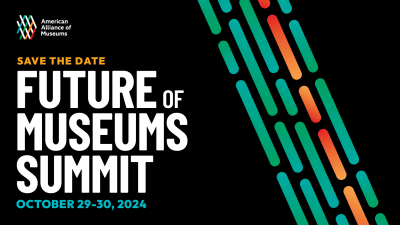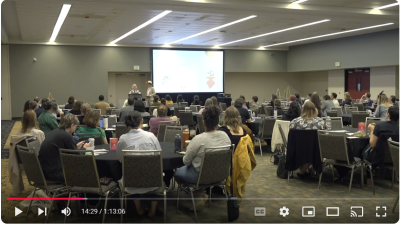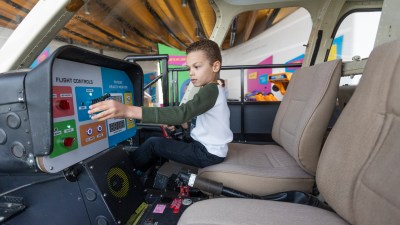
The following guidance was developed with the assistance of subject matter experts in the museum field.
The Native American Graves Protection and Repatriation Act (NAGPRA), enacted in 1990, is a landmark federal law that requires federal agencies and institutions receiving federal funding to return Native American human remains and cultural items to lineal descendants and culturally affiliated Native Nations. These cultural items include funerary objects, sacred objects, and objects of cultural patrimony.
Fast forward to December 6, 2023, the Department of the Interior announced significant revisions to the NAGPRA regulations. The new regulations emphasize greater deference to the Indigenous knowledge of lineal descendants and Native Tribes, and notably, they cut the category of “culturally unidentifiable human remains.” This change underscores a shift towards empowering Indigenous communities in the repatriation process. The revised regulations also streamline the requirements for museums and federal agencies to inventory and identify Native American human remains and cultural items in their collections, facilitating a more systematic process for the identification and return of these items.
The new requirements emphasize relationship building and towards a duty of care in obtaining informed consent from affiliated Tribal representatives even before exhibiting Native American human remains and/or cultural items or engaging in research on them. This ensures that exhibits and research are in line with the wishes and cultural practices of the affiliated Native Tribes. Having said that, this duty of care does not and should not take away from the main point of NAGPRA, which is repatriation.
Implementing the new NAGPRA regulations will require careful planning and consideration to ensure compliance and respectful treatment of Native American religious and cultural items. This step-by-step guide will help your museum staff start implementing the new requirements:
Educate & Train Staff
Begin by educating staff about the updates. This may involve hosting workshops, inviting guest speakers, or supplying online resources to ensure everyone understands the significance of the law and their roles in compliance. Recognize that the new regulations prioritize Indigenous ways of knowing and require museums to justify their decisions in greater detail.
Fostering an organizational culture that values collaboration and respect for Indigenous knowledge will require training all staff involved in NAGPRA compliance, including curators, collections managers, and outreach coordinators on cultural sensitivity, legal obligations under NAGPRA, and best practices for engaging with Native American communities.
Establish a NAGPRA Committee
Forming a dedicated NAGPRA committee inclusive of diverse stakeholders, with museum staff, tribal representatives, legal advisors, and cultural experts can help staff overseeing NAGPRA compliance efforts and ease communication between the museum and Native American communities.
Build Relationships and Consult with Native Tribes and Organizations
Establish open lines of communication with Native American Native Tribes and organizations by attending tribal meetings, conferences, and events to meet leaders and learn more about their cultural practices, concerns, and priorities. Always collaborate with tribal representatives and when in doubt ask questions to create a mutually respectful and transparent relationship.
Consult Early and Often
- Begin building relationships before consultation is necessary and consult with tribal officials early.
- Though not required by the NAGPRA regulations, involving Native Tribes in any and all decision-making related to exhibitions, research, and collections management may be a great way to move forward. NAGPRA requires this for Native American human remains and NAGPRA cultural items.
- Seek their input on exhibit design, labeling, and interpretation to ensure accuracy and cultural sensitivity.
Give Clear Information
- Clearly explain the purpose of any consultation.
- Share what you already know about Native American human remains and cultural items, what you believe their significance is, and ask for their input.
- Be transparent about your museum’s intentions and limitations.
Respect Tribal Sovereignty
- Acknowledge tribal sovereignty and the right of Native Tribes to make decisions about their cultural heritage.
- Understand that Native Tribes may have different perspectives and priorities.
- Be prepared to adapt plans based on their feedback.
Document Consultation
- Keep detailed records of all consultations, including meeting minutes, correspondence, and agreements. Consider sharing consultation notes with consulting parties so they can redact anything that should be kept confidential.
- Document how tribal input influenced decisions.
- Use these records to prove compliance with NAGPRA requirements, if necessary.
Assess Current Collections
Conduct a thorough inventory of the museum’s collections to find any potential Native American cultural items, human remains, and/or funerary objects. This inventory should include detailed information about each item’s origin, provenance, and any associated cultural affiliation.
- Invite the tribal representatives you have built relationships with to help, if they are willing, and include them in any identification.
- Prioritize repatriation efforts based on tribal requests and cultural significance.
- Address any previously unidentified items within five years of the final rule.
Develop Clear Policies and Procedures
Create or update your museum’s policies and procedures related to NAGPRA compliance. This includes protocols for consultation with Native Tribes, handling repatriation requests, conducting research on collections (both accessioned and non-accessioned or deaccessioned items) that may be covered by NAGPRA, and documenting repatriation efforts.
Review and Revise Documentation
Review existing documentation about Native American human remains and cultural items in the museum’s collections, ensuring accuracy and completeness, and consult with your consulting parties to verify. It’s important to understand where your museum is in the NAGPRA process. If you aren’t sure what has happened at their museum previously, the National NAGPRA Program would be able to share copies of previously submitted documents. Revise documentation as needed to follow NAGPRA requirements.
- Implement Repatriation Procedures: Develop clear procedures for handling repatriation requests and conducting repatriation ceremonies incorporating cultural protocols. This will involve coordinating with tribal representatives, arranging for the return of items, and documenting the repatriation process.
- Regular Review and Update: Set up a schedule for regular review and updates of NAGPRA compliance procedures to ensure ongoing alignment with regulatory requirements and best practices. This may involve conducting internal audits, seeking feedback from tribal partners, and staying informed about changes in NAGPRA regulations.
Education the Public
Engage in public outreach and education initiatives to raise awareness about NAGPRA and the museum’s efforts towards compliance and repatriation. This may include hosting public programs, publishing informational materials, and collaborating with local schools and community organizations.
Be Flexible and Adaptive
- Recognize that consultation is an ongoing process.
- Be willing to adjust plans based on latest information or changing tribal perspectives.
- Continuously learn and improve upon your approach.
Implementing the updated NAGPRA regulation changes requires commitment, empathy, and a willingness to learn. By engaging in respectful consultation with Native American Native Tribes and organizations, museums can contribute to healing past inequities and build stronger relationships with Indigenous communities.
Remember that each tribe is unique, and there is no one-size-fits-all approach. Tailor your consultation efforts to the specific needs and preferences of the Native Tribes you work with. Together, we can honor cultural heritage while promoting understanding and collaboration.
Additional Resources
National NAGPRA Program https://www.nps.gov/subjects/nagpra/index.htm . Recorded webinars, resources, and guidance documents, and templates. And program staff are a great resource for asking questions NAGPRA_info@nps.gov.
NAGPRA Community of Practice https://www.nagpracommunityofpractice.com – this is a community for people engaged in or interested in NAGPRA implementation to come together, share resources, and learn from each other.
Minnesota History Center https://kstp.com/kstp-news/top-news/updated-federal-regulations-affecting-how-native-american-artifacts-are-displayed-in-museums/ story about response to the change in NAGPRA regulations. Items currently on display are part of an exhibition called “Our Home” that was curated with and by Native communities, so we believe we are in compliance with the regulations.








Comments